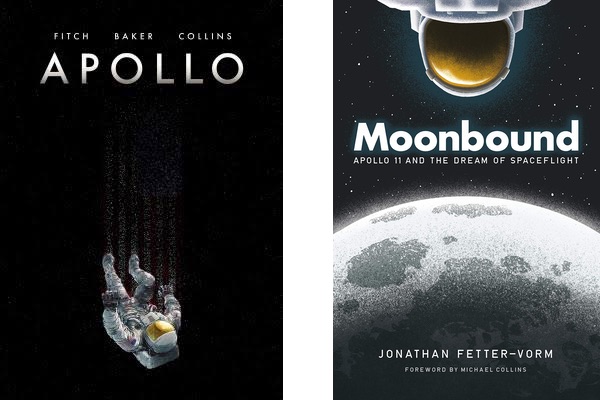Reviews: Apollo 11 in graphic detailby Jeff Foust
|
| “I know of no other book about Apollo 11 that is more enjoyable,” Collins says of Moonbound. |
The authors try to inject some psychological drama of sorts into their account. Armstrong is reminded of the death of his young daughter years earlier, and Aldrin his strained relationship with his father. For Collins, they contrive a meeting with the “Spirit of America,” in the form of a man dressed like a hippie, in a dream with Collins while he orbits the Moon alone to enforce the importance of nailing the docking with the lunar module when it returns from the lunar surface. It is… odd.
There’s no such psychoanalysis or dream sequences in Moonbound. It, too, tells the story of Apollo 11, but starts immediately with the landing of the Eagle on the lunar surface. From there, chapters alternate between the mission itself and the history of spaceflight leading up to it. It’s a straightforward and, at times, critical review of that history, including von Braun’s work with the Nazis and the limited roles for women and minorities in the race to the Moon.
While Apollo has an illustrator named Mike Collins, Moonbound has Apollo 11’s Michael Collins, who contributes a brief forward. “I know of no other book about Apollo 11 that is more enjoyable,” he writes. And the book is enjoyable, although there are a few factual oversights, like misplacing the location of NASA centers and suggesting Kennedy made his announcement about landing men on the Moon by the end of the decade in his September 1962 speech at Rice University, and not more than 15 months earlier before Congress.
Neither book offers new insights into Apollo 11 for those already at least somewhat familiar with the mission, but that’s not the goal of these books. Instead, they provide alternative ways of telling the story of the mission, and of the history of spaceflight leading up to them, in new ways to reach new audiences.
Note: we are temporarily moderating all comments subcommitted to deal with a surge in spam.
